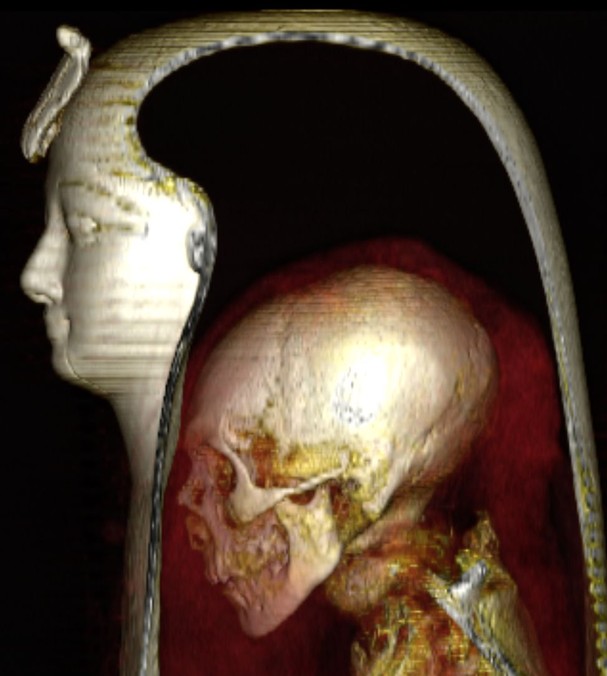The mummy of the pharaoh Amenhotep I has never been unwrapped since its discovery in 1880. But Egyptologists have opened it using an imaging technique.
Amenhotep I ruled ancient Egypt in the 16th century BCE, between –1525 and –1503. Its name literally means ” Amun is satisfied And he was pharaoh during a golden age of prosperity and security. Today, we have his mummy left in the Egyptian Museum in Cairo. Where so many mummies have been opened (“unwrapped”) by archaeologists in recent decades, one of them is an exception: that of Amenhotep I.
The reason is not to be found in the fear of a dark curse, but in an exceptional state of preservation that Egyptologists do not want to soil. The mummy of Amenhotep I is distinguished by a superb decoration which has stood the test of time: garlands sewn with flowers, as well as a funeral mask painted with realism and inlaid with colored stones.
But now the scientists of the 21st have taken the plunge: the mummy has just been opened for the first time in 3,000 years. More specifically, it was digitally “unwrapped” using a 3D computed tomography (CT scan) scanner. Thanks to this imaging technique from the medical field, Egyptologists now have a three-dimensional reconstruction of the body of Amenhotep I inside the mummy.
This research, published on December 28, 2021 in the journal Frontiers in Medicine, detail the findings that result. “ We show that CT-scan imaging can be of benefit in anthropological and archaeological studies on mummies, including those of other civilizations, for example Peru. “Sahar Saleem and Zahi Hawass, co-authors of the work, said in a commentary on the study. It is indeed a booming technique in this sector: again this year, a pregnant mummy was identified for the first time.
Amenhotep 1er died at 35
We owe the quality of conservation through the ages to a restoration that took place in the 11th century BC, four centuries after its mummification. During the then dynasty, priests set out to unearth some royal mummies from previous dynasties to repair the damage caused by tomb robbers. The digital unpacking of the mummy therefore allows both to study how it was originally mummified and buried, but also how it was treated and then re-buried during this ancient restoration.
We learn in the study that this king of ancient Egypt was 35 years old when he died. He was six feet tall, was circumcised and had ” good teeth “. During the funeral, he wore no less than 30 amulets on him, a gold belt with pearls also in gold. Anatomically, ” he had a narrow chin, a small narrow nose, curly hair and slightly protruding upper teeth “.

“ We found no injury or disfigurement due to illness to substantiate the cause of death », Detail the Egyptologists, although they nevertheless note post-mortem mutilations which seem to be caused by the tomb looters. During her original mummification, her entrails and other organs had been removed, except her brain, still in her skull, and her heart – the heart was seen as the seat of the soul.
As for the second mummification carried out in the 11th century BC, Sahar Saleem and Zahi Hawass postulated that the priests of the time were mainly motivated by a utilitarian objective: to recover accessories, jewelry and burial clothes in order to use them. for new burials. But the interior analysis of this mummy by the two researchers allowed them to discredit their own theory, at least for Amenhotep 1st. “ The priests of the 21st Dynasty lovingly mended the wounds inflicted by grave robbers, restored her mummy to its former glory, and kept the magnificent jewelry and amulets in place. », They specify.

